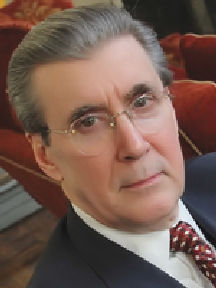On Friday, Jan. 11, the Cold Spring Harbor Laboratory announced that it had rescinded various honors from its former president, the 1962 Nobel Prize winner, Dr. James Watson.
In a joint statement, the laboratory’s Chairperson and CEO, declared that they “unequivocally reject the unsubstantiated and reckless personal opinions Watson expressed on the subject of ethnicity and genetics during the PBS documentary… Watson’s statements are reprehensible, unsupported by science, and in no way represented the views of Cold Spring Harbor Laboratory… The laboratory condemns the misuse of science to justify prejudice.”
That the laboratory condemned Watson for suggesting that black people and females are genetically inferior is commendable. However, in earlier times the laboratory’s forefathers also misused science to promote eugenics.
Originally established in 1904 as the Station for Experimental Evolution in Cold Spring Harbor by the Carnegie Institution of Washington — and renamed the Carnegie Institution Department of Genetics in 1921 — its first director was the Harvard-educated biologist and America’s leading eugenicist, Charles Davenport.
“Positive” eugenics holds that the evolution of the human race may be improved by programs of breeding which foster more desirable traits that nature alone may provide. “Negative” eugenics would “purify” the gene pool by breeding out undesirable traits or by disposing of undesirable human beings: individuals, ethnic groups, or whole races.
Davenport made the ridiculous assumption that behavior was determined by one’s race or national identity. In “In the Name of Eugenics,” author Daniel Kevles, pointed out that Davenport “found the Poles independent and self-reliant though clannish; the Italians tending to crimes of personal violence; and the Hebrews an intermediate between the slovenly Serbians and Greeks and the tidy Swedes, Germans and Bohemians and given to thieving through rarely to personal violence.”
Davenport hoped to promote procreation based on good stock. “He looked forward to a day when a woman would no more accept a man without knowing his biological-genealogical history than a stock breeder would take a sire for his colts or calves… without pedigree.”
He also called for U.S. immigration policies that prevented people from entering the country who had an undesirable hereditary history. People with “imbecile, epileptic, insane, criminalistic, alcoholic, and sexually immoral tendencies,” Davenport argued, should be stopped at the border.
In a study of prostitutes, Davenport concluded it was caused by an “innate eroticism” not economics. This erotic energy “resulted not only in sexual licentiousness but in violent outbreaks of temper and derivative crimes.”
As for Americans, Davenport supported state sterilization laws for the “genetically defective.” He was prepared, Kevles has written, “to curtail other people’s rights in order to promote the race — to ensure common protoplasmic good.”
Impressed by Davenport, Mary Harriman, mother of New York Gov. Averell Harriman, agreed to financially support his work. She funded the Eugenics Record Office and bought approximately 75 acres of land near the experimental station. While separate from the station, Davenport headed both of them, and in essence, Edwin Black wrote in “War Against the Weak,” they “formed an interlocking eugenic directorate headquartered at Cold Spring Harbor.”
In the 1930s, Davenport established relationships with Nazi racial hygienists and he wrote several articles that were published in their eugenic journals.
Fortunately, one year after Davenport’s induced retirement in 1934, the Carnegie Institute reviewed the work of Eugenics Record Office and determined to stop its research. In 1939, funding was terminated and the office was permanently closed.
After World War II, the Eugenics Record Office building was sold and its records were disposed. Some still reside at the laboratory for research purposes; most wound up in Philadelphia’s American Philosophical Society “which now holds the largest consolidated eugenic collection anywhere.”
With its dark history behind it, the Carnegie Institute of Washington merged the Department of Genetics with the adjacent Biological Laboratory and named it the Cold Spring Harbor Laboratory.
Today, with an annual budget of $150 million and a staff of 1,200, the laboratory performs research on cancer, neuroscience, plant biology, genomics, and quantitative biology. Eight of its scientists have received the Nobel Prize.
While Watson’s racist views have embarrassed Cold Spring Harbor Laboratory, and have brought back memories of its checkered origins — no doubt it will maintain its current reputation as the leading research institution in molecular biology in the world.



